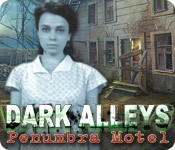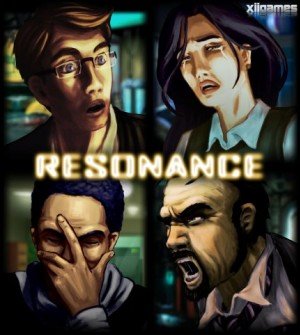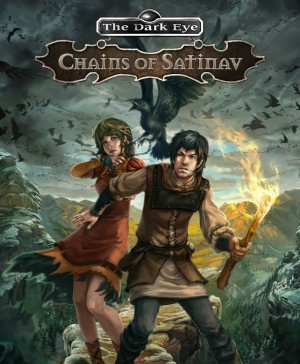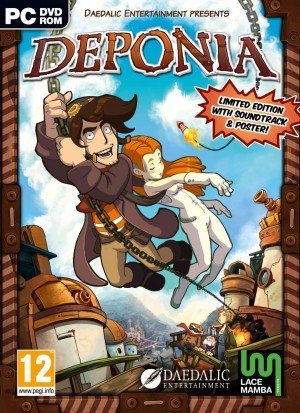Review for Home
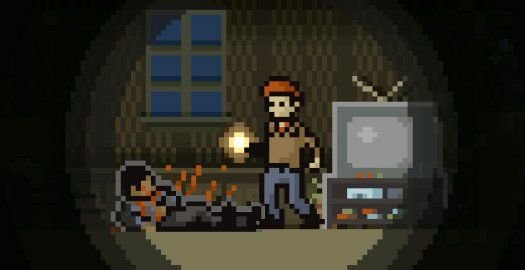
Do you hate spoilers of any kind, no matter how small? Yes/No
If yes then read no further, especially if you're a horror fan. Instead, take my word for it and go cough up your $2 immediately to give Home a whirl. You won’t regret it. If no, rest assured that I would never be so crass as to reveal major plot spoilers, so feel free to read on for more details, but beware that everything I say from now on will diminish your first playthrough, as this game is best enjoyed with no preconceptions whatsoever. You have been warned.
The creation of Toronto-based indie developer Benjamin Rivers, Home is not really an adventure game, as there are no real puzzles to solve and very limited exploration, but as an engaging interactive story it has a lot that will appeal to avid adventure gamers. It's rendered in retro pixel art, marketed as a 'unique horror adventure', and in an unusual twist from the norm it's designed to be played in one sitting (of roughly 90 minutes), as there is no option to save. The latter is a bold stylistic choice, but it helps maintain the atmosphere by not allowing pauses. (EDIT: The updated Steam version of the game released after this review does include a save option.)
The biggest draw is that the choices you make affect the story in a dynamic way, leading to multiple endings and plenty of plot twists on the journey. And that’s exactly what this is: a journey. The story moves from A to B in a linear fashion; you’ll always encounter the same scenarios, but the items you interact with and the protagonist's thoughts adapt and change depending on the choices you’ve made up to that point, giving you more backstory details and impacting the eventual finale you’ll see. It’s more than simply a visual novel, but there are few problems for you to solve and (here's the first of those atmosphere-threatening spoilers coming) you can’t die.
The scene is set with the words “All I remembered at that point was finding myself alone” typed across the screen in simple white print on a black background. This is how the narrative progresses, as a series of thoughts written in the past tense. There’s no voice work in Home, just these simple text cards that have the look of an old silent movie. An unknown man awakens in an abandoned room, and while the action occurs in the present, the story continually draws on his fleeting, failing memories. Finding himself in a strange darkened house, he manages to light his surroundings with a simple torch discovered nearby. The only thing he’s aware of at first is his isolation and whatever he can see just in front of him, the blackness illuminated in just a simple halo around him.
Immediately striking is the aesthetic style, a simple pixel art reminiscent of the early SCUMM engine days. The protagonist is displayed in a constant walking position and shows no facial features aside from his eyes, while the backdrops are simple line renderings that show only the vaguest hint of what is around you. On its own this wouldn’t make for a particularly spooky atmosphere, but the aura of light against a sea of darkness makes moving ahead all the more menacing, as you have no idea what’s awaiting you down the hall. It isn't long before you have reason to feel anxious, either. Upon leaving the first room you immediately come across a dead body the protagonist doesn't recognize, caked in blood. Such oppressive uncertainty creates a marvellously claustrophobic atmosphere in the interior areas, and becomes even more effective later in the game when the man ventures outside.
The entire game takes place on a 2D plain, so you move around with the arrow keys and hit the space bar upon reaching a door or staircase to elicit a short animation that will lead you to the next area. Apart from simply walking around, controls are very limited. Pressing the up arrow shines the light a little higher for anything you might be missing up in the rafters, and pressing down acts as a sort of ‘return’ key for advancing text boxes. Various objects you pass take on a white outline, and pressing space next to one results in a text description (never breaking from the first-person hindsight narrative). Investigation is key to getting as much out of Home as possible, so you'll want to interact with everything you come across. And it’s worth being thorough, as most interactive items can be looked at twice, with important information sometimes revealed on the second look.
While there's no "action" in this game, Rivers is clearly a fan of the survival horror genre, as you can see a lot of its influences here. Door animations have a distinctly Resident Evil feel, and the mansion seems like a long-lost Alone in the Dark entry. However, it’s through the soundscape that the atmosphere really excels. There’s little music throughout (although what's here makes for effective horror droning, particularly at the beginning); instead the silence is broken by a layer of effects to create a constant unsettling mood around the headphone-sporting player. The developer has infused reliable horror staples like foreboding thunderstorms and dripping roofs with clanking industrial grindings and whirring rusted machinery sounds to assault the player with a nerve-jarring cacophony of noise. It’s marvellously orchestrated and makes the ‘jump’ moments (cats screeching and pipes bursting) all the more effective when they shatter through it all suddenly and unexpectedly.
The game has roughly eight scenes to work through, starting in the house of the dead man you find in the hallway. Early on you’ll come across a black and white photo of the man with his wife, but there's no sign of the missing spouse. Exploring the mansion reveals clues to who he was and why you might still need to be wary of what’s round the next corner. From there the gameplay follows a strict A to B linear logic throughout. For instance, it becomes apparent that there’s no way out through the front door so you’ll simply have to keep looking; eventually you’ll gain access to the basement, so with that as your only way forward, you follow this path. I only discovered a single scenario where a choice was given how to leave one of the buildings.
Delving deeper beneath the basement, you'll proceed to the tunnels under the mansion. Here more details of the odd goings-on start coming to light, tying not only the man upstairs but also the protagonist himself to a larger mystery. Later you'll venture into a water processing plant before going out into the town and eventually ending at the eponymous 'home'. There’s no real freedom to roam even in the town, however; it’s simply one location to the next. Yet despite this linearity the game doesn’t feel limited, as the choices you make keep this from being a run-of-the-mill visual novel. Occasionally when interacting with an object, you’ll be asked a Yes or No question. Some are important and others aren’t. For example, at the beginning you’ll come across a mouse caught in a trap; do you release it or don’t you? Later on you’ll find a gun; do you pick it up or don’t you? It seems obvious which of these particular choices will have a larger bearing on your future, but they aren't always nearly as apparent throughout the course of the journey.
The simplicity of the gameplay mechanics is both a blessing and a curse. You don’t have to remember much of the story to make progress, but it’s easy to forget what you’ve picked up. You can amass a fairly substantial inventory even by adventure game standards, yet there’s no way of looking back over what you’ve acquired. Items are automatically used when you interact with their associated hotspots, so object collection and use isn't really a puzzle – you’re simply looking for either a story clue or the key/item that unlocks the door to the next area – however, it would have occasionally been nice to take stock of what I had and what I’d learnt so far.
Fortunately, the game has a good way of making you assess whether you’ve covered everything before proceeding. Towards the end of a location, a text box will pop up unsolicited with the man’s thoughts about what has happened. For example, if he left the gun he might feel less confident about progressing, but if he picked it up he might bemoan the extra weight he has to carry. This will generally happen one screen before moving on, and whilst you can’t undo any definitive decision you’ve made, you are given enough time to think over what you might have missed and take further action before passing the point of no return (there’s no way of backtracking once you’ve left a location). Here’s the thing, though (and another of those potential spoilers): you can’t go wrong. You will always reach the end of the game one way or the other, so no matter what you do or don’t do, you’ll proceed anyway.
Upon first playthrough, with no preconceived ideas about how the game works, you’ll be surprised to find the numerous significant choices available to you as you reach the climax. As the credits rolled and my story was recapped, it slowly dawned on me that there is no hard and fast story to Home. Rather, the decisions you make simply give different clues for you to make up your own mind. Even after a second go doing things differently, you'll still end up with only a vague summary of what you’ve discovered with no definitive answers. I can see the reasoning for wanting to build a user-created narrative – it’s all part of Home’s unique charm – but its non-committal open-endedness isn’t going to sit well with everyone. I, for one, desperately wanted to know more but found myself even more clueless after my second attempt. It’s a testament to the storytelling that I was so eager to know the ‘true’ story, but I found it frustrating that there ultimately isn’t one.
I was also slightly disappointed to find that the advertised ‘horror’ never really bore fruit. The story is more in line with a thriller like The Machinist or Memento, so all this pent up lurking dread never really amounted to anything more than a few jumps at the beginning and a mystery at the end, all of which is redundant on anything beyond the first playthrough (hence my insistence on staying spoiler-free).
However, I won’t pour scorn because when all is said and done, this game is well worth its remarkably low price and provides an immensely enjoyable experience from beginning to end the first time around; just don’t expect any conclusive answers even on multiple playthroughs. It could well be that Rivers still has some aces up his sleeve, as he seems to be updating the game for bugs (I only found a couple of typos and the odd sound effect cut out but nothing fatal) and there were definitely some secrets yet to be revealed – an intriguing safe towards the end, for one. The author is also taking full advantage of social media to prolong the experience, with a website for people to share their own interpretations (revealed upon completion of the game) and a twitter account for the protagonist himself. There may not be any answers, but there's no shortage of means to contemplate the questions.
So now that you know more about Home, only one question remains: Have you taken my advice and spent the $2 to buy it yet? Yes/No












